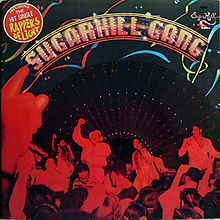
The images and ideas portrayed through rap music are at times tasteless and vulgar to say the least. According to the article, "Listening To Rap: Cultures Of Crime, Cultures Of Resistance", "Rap occupies a controversial position in the contemporary pantheon of popular culture, championed by some as a cultural riposte to disadvantage and discrimination" (Tanner et. Al 710). Rap music is embraced primarily by younger generations. Those who were born decades before the explosion of rap in the 80's and 90's struggle to move past the vulgarity, which is often present in the music, in order to decode the message encoded by the artists. Jackson and Anderson assert the idea that hip-hop serves as an international means through which individuals can express "feelings about politics, crime, poverty, violence, and other social issues" (Jackson et al. 23). Yet, the commodification of hip-hop music has somewhat diminished this aspect of the genre. The desire "to make it" and obtain and/or maintain stardom significantly diminishes the number of artists who are willing to willing to forgo what is desired by mainstream consumers in order to make a complex political or social statement.

An analysis of the Sugarhill Gang's self-titled 1980 debut album will reinforce the idea that early hip-hop served as a means of cultural expression. According to Jewitt and Oyama, "framing 'connects' or 'disconnects' elements" within and image (Jewitt and Oyama 150). In the particular image, the crowd is inherently connected with the performers who are in a slightly elevated position. Furthermore, the use of the color red gives salience to both the crowd and the performers, allowing them to stand out among the other visual aspects of the album cover. It appears that the event that is taking place within this image is some form of a disco party, which is unique within the realm of hip-hop album art. The group aspect of this image is quite important to understand in order to fully grasp the image's visual significance. The vast majority of hip-hop album art features depictions of individuals rather than large groups. This is indicative of the idea that rappers now serve as icons to promote the commodification process, rather than existing as cultural symbols demonstrating the power that rests within the genre as a means of cultural expression. As a culture we tend to lose sight of this idea, and instead are caught up in the depictions of wealthy gangsters dawned in gold jewelry or driving lavish cars with excessively large wheels. An analysis of this image allows one to arrive at the conclusion that early hip-hop did not exist as a commodity to be bought and or sold, but rather as a means of artistic expression to be enjoyed by both groups and individuals. Early rap music carried meaning, ultimately reinforcing Jackson and Anderson's assertions discussed above.